
 Post-Hurricane Katrina, New Orleans real estate is cheap, thereby allowing Jack (Rob Corddry, Hot Tub Time Machine) and his pregnant-with-twins wife, Vanessa (Leslie Bibb, Law Abiding Citizen) to snatch up a spacious, historic fixer-upper for a song. It’s in a neighborhood that people don’t know even exists — well, white people — but those who do have given the residence a pet name: House of Blood, on account of all the murders that have taken place there.
Post-Hurricane Katrina, New Orleans real estate is cheap, thereby allowing Jack (Rob Corddry, Hot Tub Time Machine) and his pregnant-with-twins wife, Vanessa (Leslie Bibb, Law Abiding Citizen) to snatch up a spacious, historic fixer-upper for a song. It’s in a neighborhood that people don’t know even exists — well, white people — but those who do have given the residence a pet name: House of Blood, on account of all the murders that have taken place there.
The threat to life comes not from outside, but from within, as the place is reputedly haunted. That would make sense, given Vanessa’s sudden bad habits and demonic vocalizations. (Pay no mind to the hairy, bloated, naked creature that attempts oral sex — that’s just a wandering patient from the nursing-care facility down the street.) Dispatched by the Vatican to exorcise Jack and Vanessa’s home are two Italian priests (co-writers/directors Robert Ben Garant and Thomas Lennon) with a penchant for chain-smoking and orgasmic consumption of po’ boys. Says one of the holy men to our expectant parents/new homeowners, “I can assure you the devil is real … and he is a dick.”
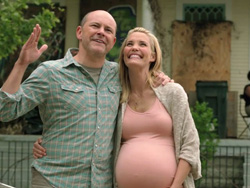 Let it be said, as if it needed telling, that Hell Baby is a horror spoof of the possession picture, especially those involving evil children. Whether you find it successful depends less upon your tolerance for grown adults playing “catch” with a newborn and more upon that for the Garant/Lennon team, creators of TV’s Reno! 911; its theatrical spin-off, Reno! 911: Miami; and arguably the best ping-pong/kung-fu hybrid the big screen has seen, Balls of Fury — all scattershot, but with just enough hits to make the misses worthwhile. The same goes here, traversing hilarious highs and lagging lows.
Let it be said, as if it needed telling, that Hell Baby is a horror spoof of the possession picture, especially those involving evil children. Whether you find it successful depends less upon your tolerance for grown adults playing “catch” with a newborn and more upon that for the Garant/Lennon team, creators of TV’s Reno! 911; its theatrical spin-off, Reno! 911: Miami; and arguably the best ping-pong/kung-fu hybrid the big screen has seen, Balls of Fury — all scattershot, but with just enough hits to make the misses worthwhile. The same goes here, traversing hilarious highs and lagging lows.
As the least interesting pieces of a rather tightly contained cast, Garant/Lennon’s men of the collar are responsible for many of the misses. Stealing the show is Keegan-Michael Key (Role Models) as a friendly African-American living in Jack and Vanessa’s crawlspace; stopping it cold is Riki Lindhome (2009’s The Last House on the Left) as Vanessa’s bubbly Wiccan sister. It’s not the fault of Lindhome, a rather talent comedian, but the script. I felt embarrassed for her in her character’s introductory scene, which requires the actress to be completely, totally, full-frontal, shaved-pube nude for three minutes and no point. —Rod Lott


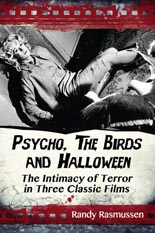
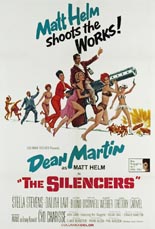
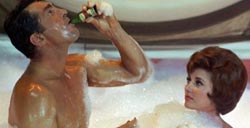
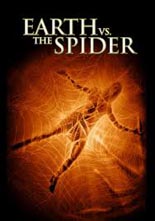
 Part of the Creature Features pentalogy of in-name-only remakes of AIP classics — in this case,
Part of the Creature Features pentalogy of in-name-only remakes of AIP classics — in this case, 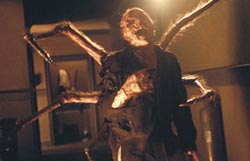
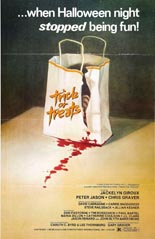
 Know the fable about “The Boy Who Cried Wolf”? Of course you do! Everyone does! However, that didn’t stop writer/director Gary Graver (
Know the fable about “The Boy Who Cried Wolf”? Of course you do! Everyone does! However, that didn’t stop writer/director Gary Graver (